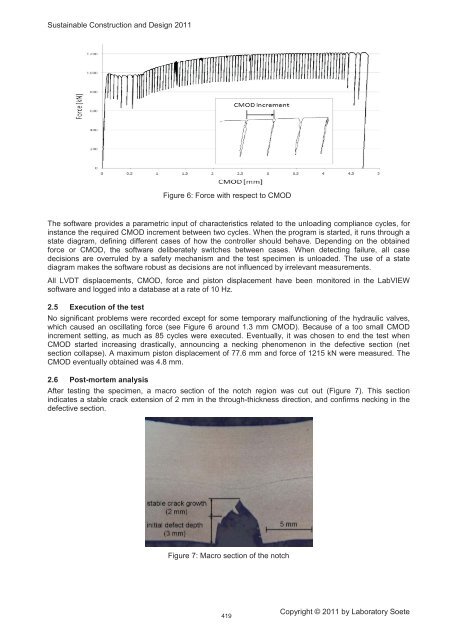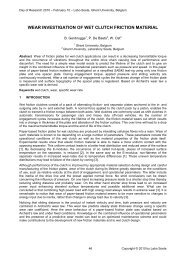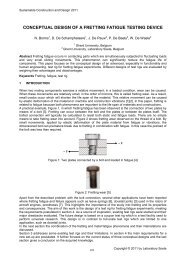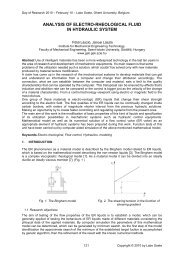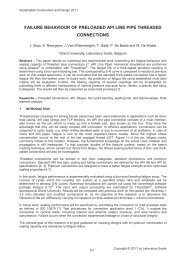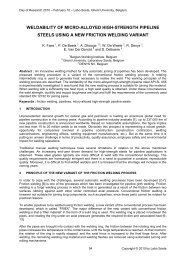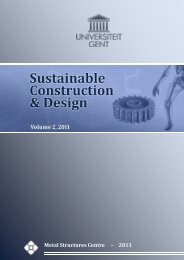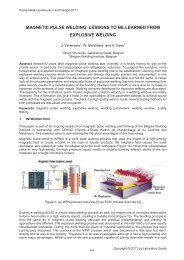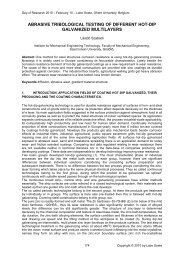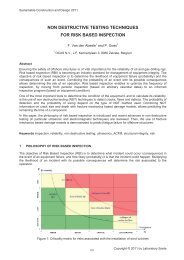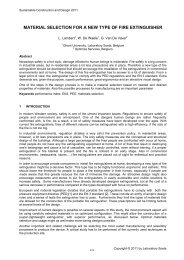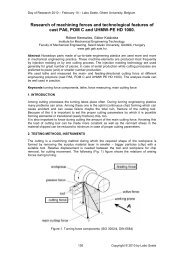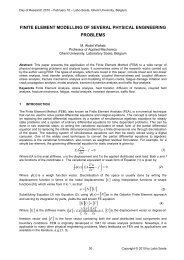validation of a wide plate finite element model using digital image ...
validation of a wide plate finite element model using digital image ...
validation of a wide plate finite element model using digital image ...
You also want an ePaper? Increase the reach of your titles
YUMPU automatically turns print PDFs into web optimized ePapers that Google loves.
Sustainable Construction and Design 2011Figure 6: Force with respect to CMODThe s<strong>of</strong>tware provides a parametric input <strong>of</strong> characteristics related to the unloading compliance cycles, forinstance the required CMOD increment between two cycles. When the program is started, it runs through astate diagram, defining different cases <strong>of</strong> how the controller should behave. Depending on the obtainedforce or CMOD, the s<strong>of</strong>tware deliberately switches between cases. When detecting failure, all casedecisions are overruled by a safety mechanism and the test specimen is unloaded. The use <strong>of</strong> a statediagram makes the s<strong>of</strong>tware robust as decisions are not influenced by irrelevant measurements.All LVDT displacements, CMOD, force and piston displacement have been monitored in the LabVIEWs<strong>of</strong>tware and logged into a database at a rate <strong>of</strong> 10 Hz.2.5 Execution <strong>of</strong> the testNo significant problems were recorded except for some temporary malfunctioning <strong>of</strong> the hydraulic valves,which caused an oscillating force (see Figure 6 around 1.3 mm CMOD). Because <strong>of</strong> a too small CMODincrement setting, as much as 85 cycles were executed. Eventually, it was chosen to end the test whenCMOD started increasing drastically, announcing a necking phenomenon in the defective section (netsection collapse). A maximum piston displacement <strong>of</strong> 77.6 mm and force <strong>of</strong> 1215 kN were measured. TheCMOD eventually obtained was 4.8 mm.2.6 Post-mortem analysisAfter testing the specimen, a macro section <strong>of</strong> the notch region was cut out (Figure 7). This sectionindicates a stable crack extension <strong>of</strong> 2 mm in the through-thickness direction, and confirms necking in thedefective section.Figure 7: Macro section <strong>of</strong> the notch419Copyright © 2011 by Laboratory Soete


